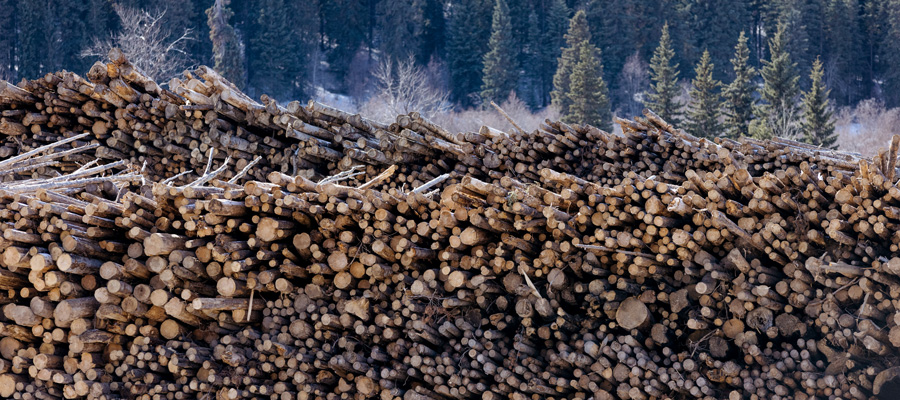A bleak jobs picture outside BC’s big cities
We hear a lot about BC’s strong jobs performance – it’s mentioned in every speech and media appearance by our Premier and members of her government. On the surface, it sounds like a good news story with over 73,000 new jobs created in 2016 while many provinces actually lost jobs. But what the Premier doesn’t say is that most of these jobs were created in Metro Vancouver and Victoria, and our longer-term track record on job creation is much less rosy.
The headline-making job creation numbers mask large regional disparities across the province. Outside Metro Vancouver and Greater Victoria, BC’s jobs story is nothing to brag about.
Recent job growth also comes on the heels of six years of slow recovery since the 2008/09 recession. BC ranked near the bottom of the pack compared to other provinces between 2009 and 2015, ahead only of New Brunswick and Nova Scotia (based on job creation as a share of all employment, the best way to compare provinces of different size). Adding last year’s strong job performance bumps BC to third place – behind Ontario and Alberta (which despite the job losses suffered this year has seen the strongest net job-creation in Canada since the recession).
The picture, however, becomes very bleak when we get out of the Lower Mainland, where the vast majority of job growth is located. The Metro Vancouver urban area is home to the vast majority of all net new jobs created in the province in 2016 (83%). The broader Lower Mainland/Southwest region of BC, which includes the Fraser Valley, Squamish, Whistler and the Sunshine Coast, is home to 94% of BC’s net job growth.
The only other economic region that saw net job creation last year is Vancouver Island/Coast, which gained just over 9,000 jobs – two thirds of them in Greater Victoria.
The other regions of BC lost jobs in 2016 (see Figure 1).
Communities in the Interior and the North of the province—Thompson-Okanagan, the Cariboo, Kootenays, North Coast/Nechako and the Northeast—saw net job losses last year. For many of these regions, these job losses came on the heels of hard times – they were hit particularly hard by the recession, after already struggling with the decline in forestry jobs.
An increase in commodity prices post-recession and the BC government’s 2011 Jobs Plan were supposed to breathe life into the more rural regions of our province, but this largely did not happen. Despite a brief boost in jobs and economic activity in the Cariboo and the Northeast, most BC regions have not yet recovered the jobs lost in the recession seven years ago.
As seen above in Figure 2, net job losses post-recession have come close to or exceeded 5% of all employment in each of Vancouver Island/Coast, Kootenay, Cariboo and North Coast/Nechako regions. The Lower Mainland and the Northeast are the only regions where there are more jobs today than there were before the recession hit in 2008. But this was not all good news for the Northeast because it saw sizeable job losses in 2016.
So, BC’s economic activity and jobs have become increasingly concentrated in the Lower Mainland/Southwest region post-recession, from 61% of all jobs in 2008 to 65% of all jobs in 2016. This is exactly the opposite of the much-needed revitalization of BC’s North and Interior that the Premier’s Jobs Plan was supposed to accomplish.
Another way to look at the regional jobs picture is the unemployment rate. Unemployment rates dropped below 6% in 2016 in BC’s Southwest corner – to 5.8% for Vancouver Island/Coast and 5.5% for the Lower Mainland/Southwest. But elsewhere in the province unemployment rates are well above 7%.
In the Northeast, a region that saw a big employment boom when gas production and exploration was still strong, the unemployment rate climbed from 5.9% in 2015 to 9.7% in 2016 – a dramatic and distressing about-face.
It’s no surprise then that outside of Metro Vancouver, employment and the economic situation is the greatest concern for families, according to the Vancouver Foundation’s latest Vital Signs report.
This is why BC needs a new bold jobs plan that would revitalize communities in every corner of the province, the framework for which we’ve started to develop here.
In the coming months leading up to May’s provincial election, we’ll be hearing lots about jobs. But be advised – parse those numbers out because the jobs story varies greatly by region. Breaking down the numbers reveals that many in our province are experiencing less economic security, not more.
Topics: Economy, Employment & labour, Features






